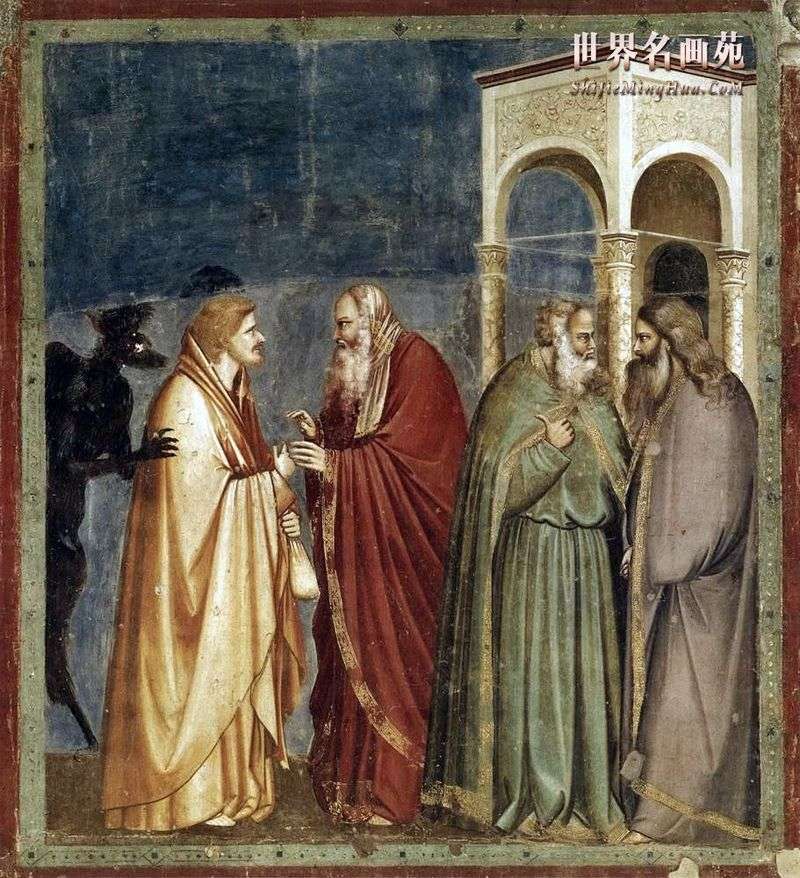
The image of the betrayal scene is placed on the left side of the triumphal arch in the Chapel del Arena. In the interpretation of this evangelical event, Giotto does not depart from his favorite manner of communicating to all that is happening a form of extreme clarity and credibility.
Behind the traitor is a silhouette of the devil, which literally pushes him to commit an ungodly act. At the same time, this pictorial motive is visually perceived as a kind of shadow cast by the figure of Judas. At the same time the distorted profile of the line is represented in the form of some grotesque repetition, the ugly echo of the profile of Judas Iscariot himself, who receives from his high priests his thirty pieces of silver.
It is worth noting how well the figures of the two high priests standing a little further are related to the depiction of the temple portico: the descending planes of the upper walls of this architectural wings seem to correspond to the rotation of their figures to each other.
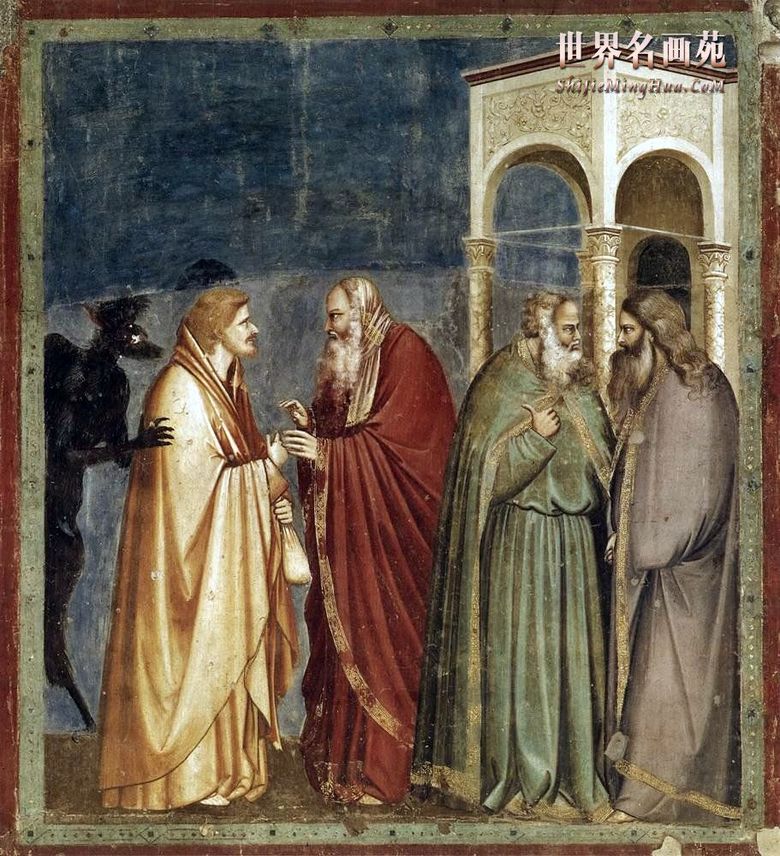 Judas Betrayal – Giotto
Judas Betrayal – Giotto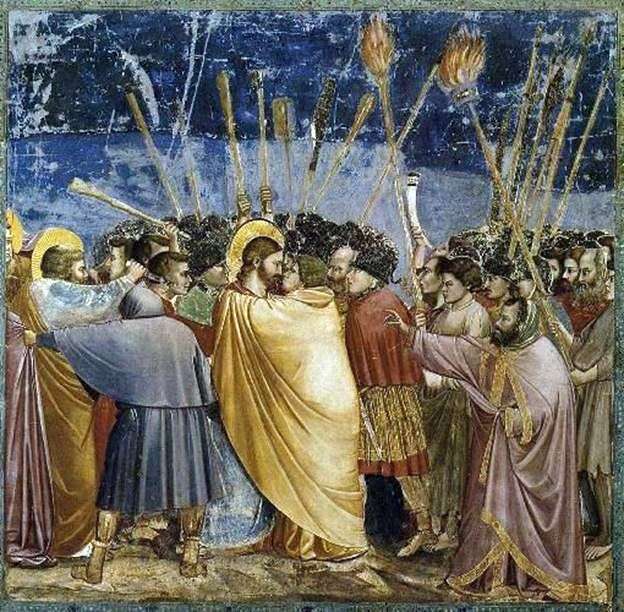 Kiss of Judas by Giotto di Bondone
Kiss of Judas by Giotto di Bondone Kiss of Judas by Paula Moderzon-Becker
Kiss of Judas by Paula Moderzon-Becker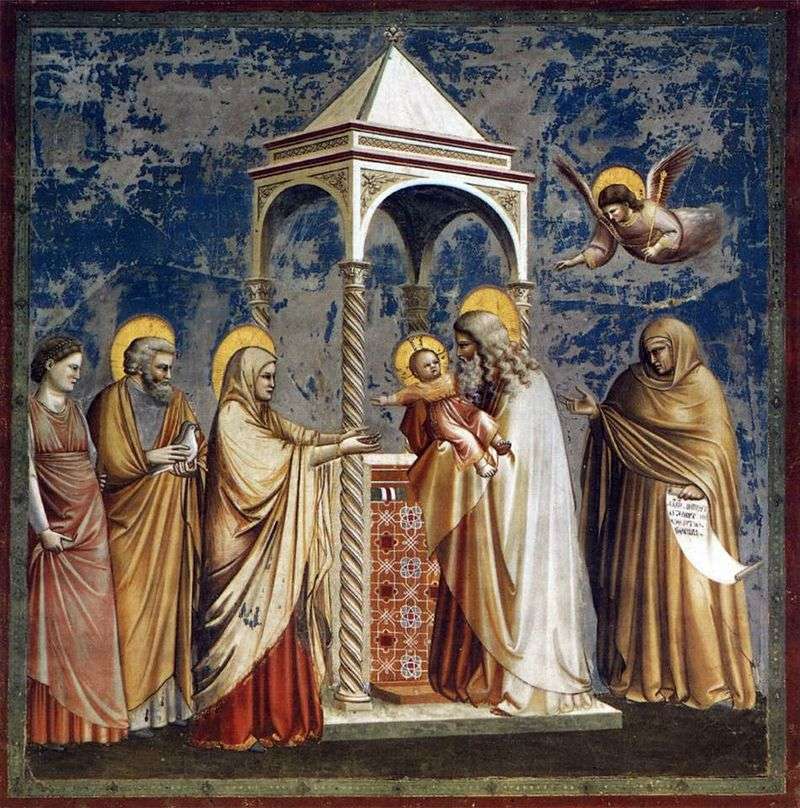 The Presentation of the Lord by Giotto
The Presentation of the Lord by Giotto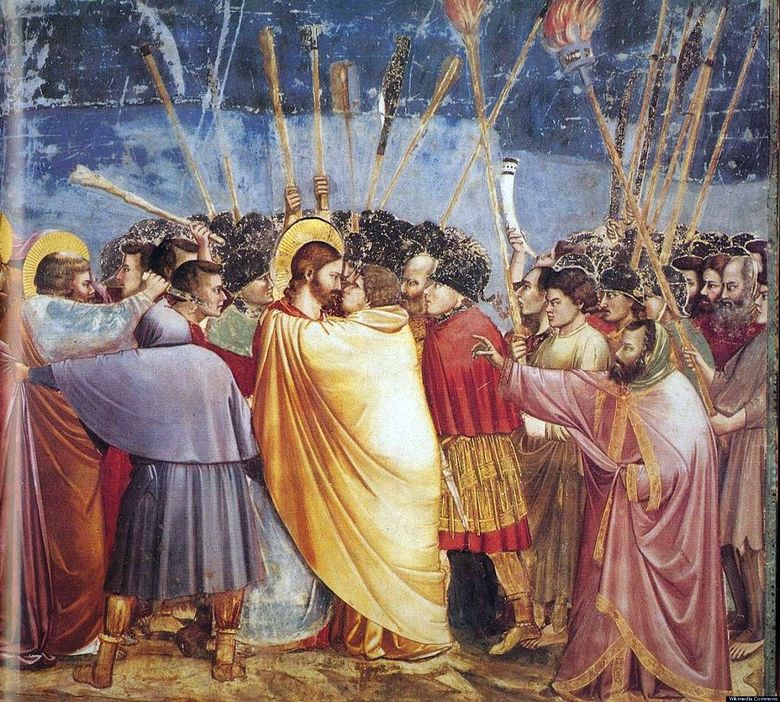 Judas Kiss – Giotto
Judas Kiss – Giotto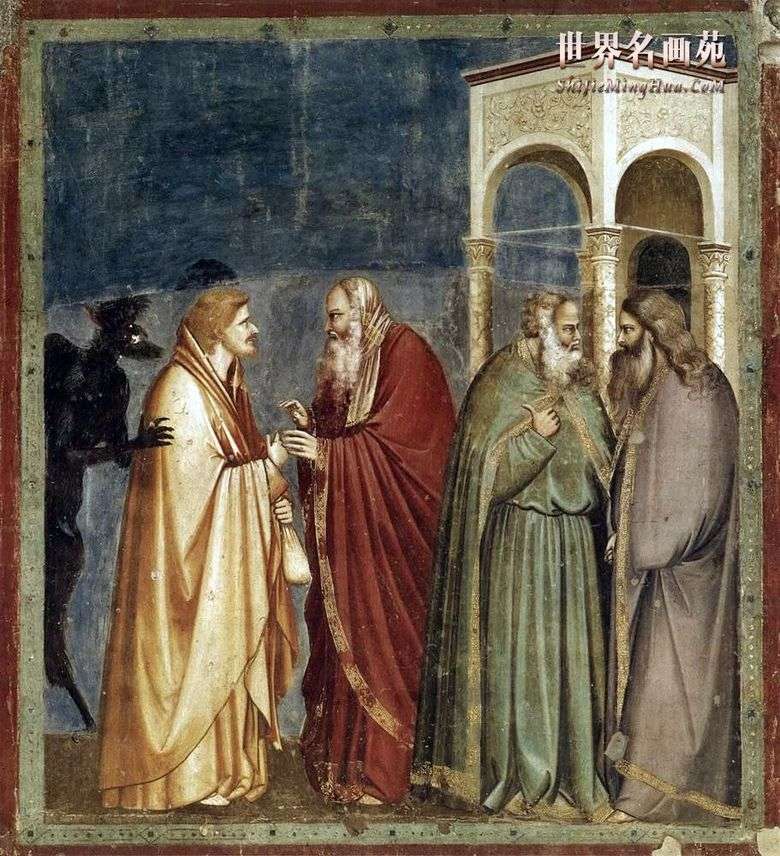 Traición de Judas – Giotto
Traición de Judas – Giotto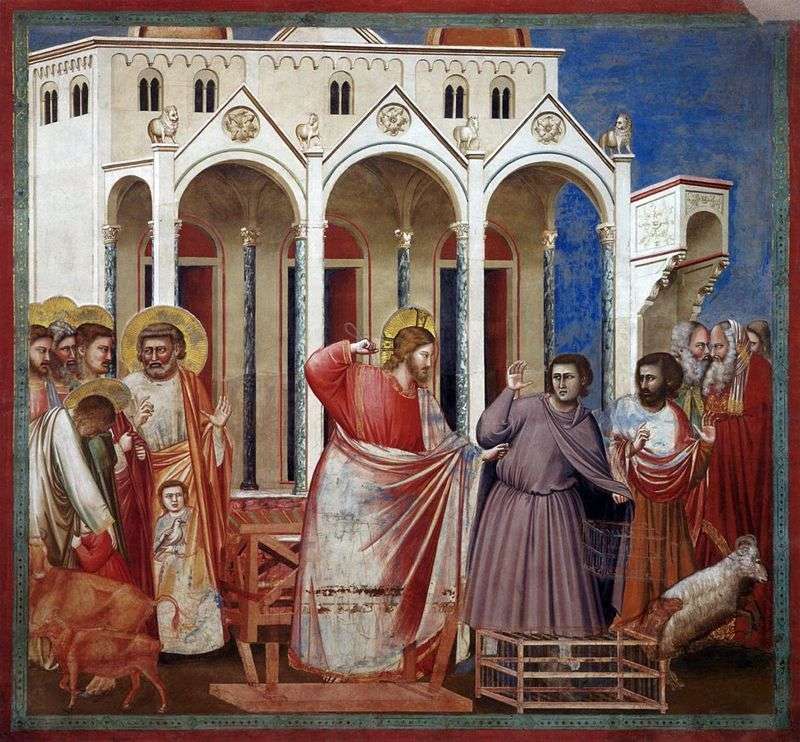 The expulsion of merchants from the temple by Giotto
The expulsion of merchants from the temple by Giotto The figure of the archangel Gabriel from the fresco “Annunciation” by Giotto
The figure of the archangel Gabriel from the fresco “Annunciation” by Giotto